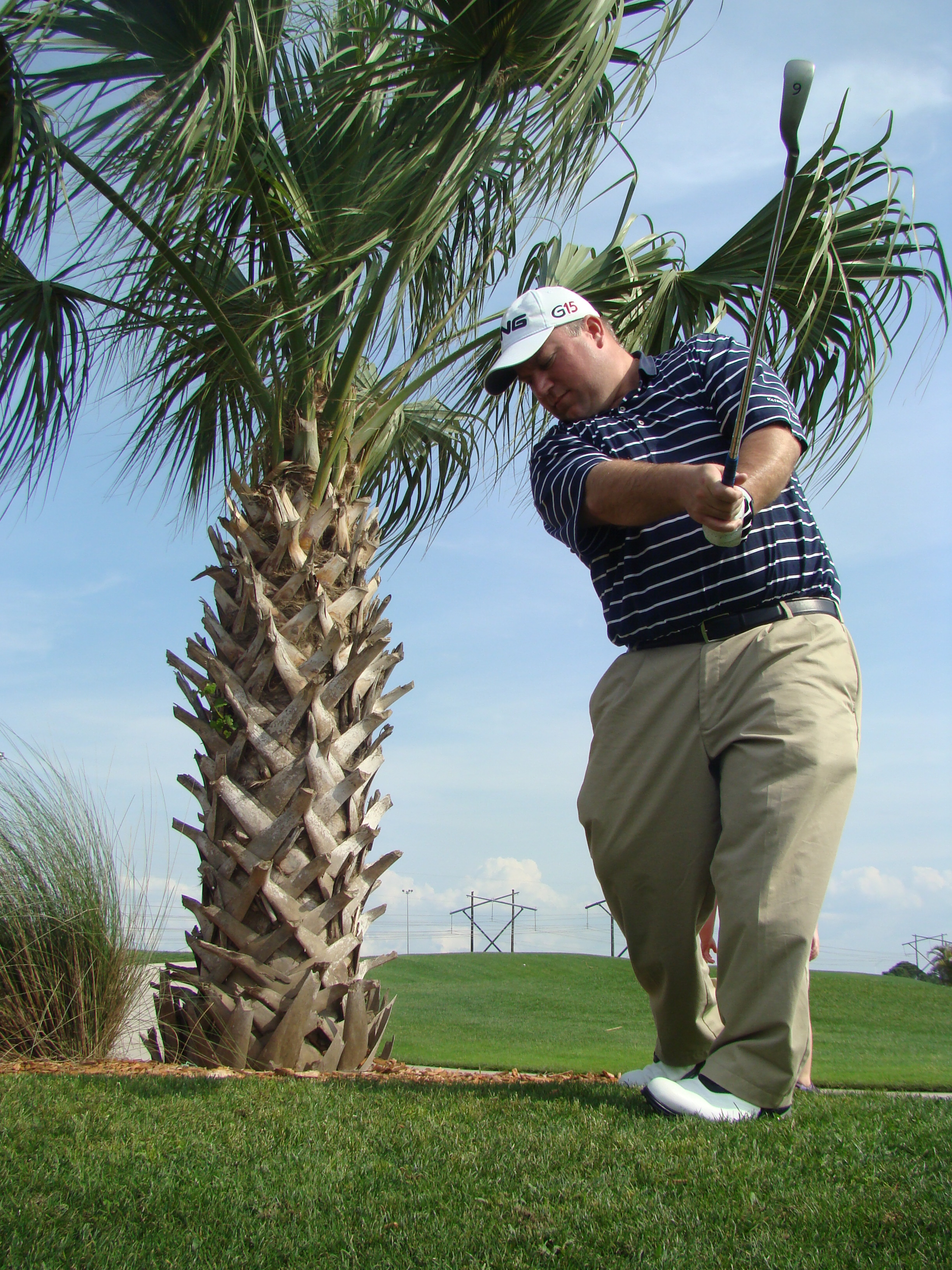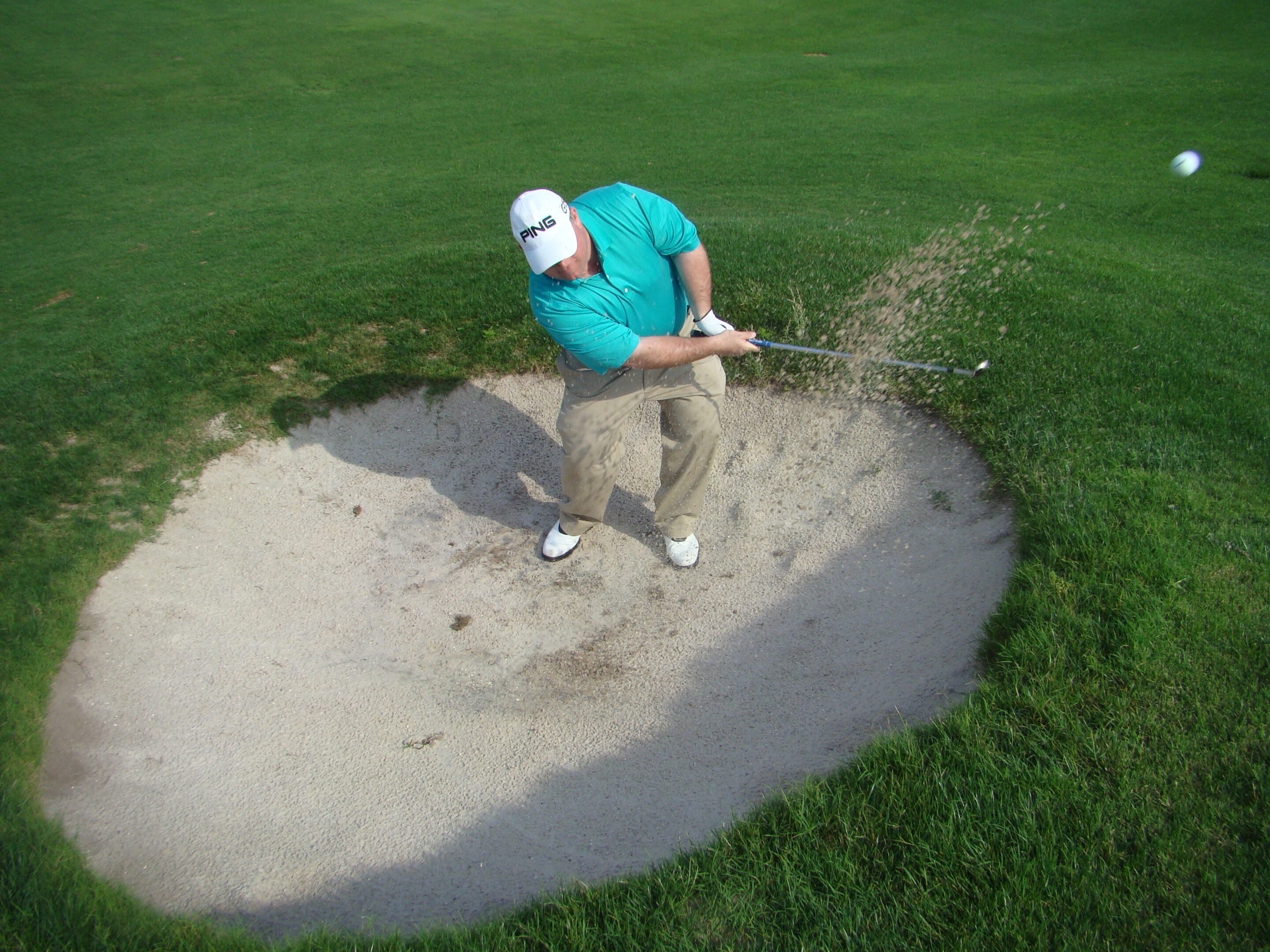No Results Found
The page you requested could not be found. Try refining your search, or use the navigation above to locate the post.
Are you the person that has the “special” ball that you put into play when you are faced with an approach shot over a hazard like water? Well, say goodbye to those old balls because with this video tip, you won’t have to do that ever again.
Knowing the golf course you are playing is very important. The shape of the green and the yardage from the front of the green to the back plays a roll in how far you actually carry a golf ball in the air. Now with Trackman and other ball launch devices, we can see how far golfers actually carry their shots. Know your carry yardage and know the golf course.

PGA Director of Instruction
With over 30 years of teaching experience, it's easy to see why Mike has become a leader in the world of golf instruction. Everything from cutting edge social networking techniques to having his own podcast, Mike has helped to change the face of teaching golf. He currently is the Director of Instruction at Walnut Creek Country Club in South Lyon, Michigan.
Email: [email protected]

When a golf ball is topped one of three things happened:
Try this…..
Through impact, feel like you turn your bottom hand knuckles to the ground at impact. Make sure your hands are ahead of the ball at the same time. These two things should get you hitting the ball better.

PGA Director of Instruction
With over 30 years of teaching experience, it's easy to see why Mike has become a leader in the world of golf instruction. Everything from cutting edge social networking techniques to having his own podcast, Mike has helped to change the face of teaching golf. He currently is the Director of Instruction at Walnut Creek Country Club in South Lyon, Michigan.
Email: [email protected]
The page you requested could not be found. Try refining your search, or use the navigation above to locate the post.
Never miss a new post, article, or video!
Subscribe to our newsletter Chip Shots!

The first golf wedge to be played was the pitching wedge, also known as a jigger. This was the best option golfers had for difficult shots until the invention of the sand wedge.The sand wedge was invented by Gene Sarazen after flying in Howard Hughes‘ private plane. He built his first prototype in 1931 and started carrying it in his bag in 1932. Before his invention of the sand wedge, many golfers had a difficult time getting their balls out of the bunker.
Gene Sarazen began to win tournaments in 1935 with a new club he had invented that was specialized for sand play. He is hailed as the inventor of the sand wedge. However, history goes about 3 years further back than that. “Spoon” clubs offered varying degrees of loft and allowed players to scoop their ball out of sand traps and deep rough. As manufacturers became more and more innovative with club design, new types of wedges appeared. Some had concave faces, others featured deeply grooved faces, but not all of these designs conformed to USGA and R&A regulations, and many were banned. With the concave-faced wedge having been outlawed in 1931, Sarazen designed his sand wedge with a straight face. Another modification that he made was to add extra lead to the front edge of the club face, allowing it to cut through the sand more smoothly. After he won the 1932 British and U.S. Opens with the help of his new club, its popularity quickly grew.
Well now that we have a little history on how Gene Sarazen changed the game of golf forever. Lets move on to talk about what that plane ride showed Mr. Sarazen how a “rutter” on the bottom of a wedge would help golfers all around the world play better.
In golf, Bounce, or bounce angle, is a term used to describe the angle inscribed by the leading edge of a golfing iron (particularly a wedge), the sole of the club, and the ground. In plainer terms, bounce angle is an indication of how much the sole, or bottom-most part, of the club head lifts the leading edge. A high bounce angle (angles of 12-15o are not uncommon) indicates a sole which lifts the leading edge significantly, whereas a club with little or no bounce allows the leading edge to contact the ground without interference.
The purpose of introducing bounce into club head design is to control how easily wedges, with their steep angles of attack, penetrate the ground under the ball. A low- or zero-bounce club has a streamlined profile, and the sharp leading edge of the club will tend to cut into the ground readily. When this is undesirable, the use of a club with more bounce will cause the sole of the club to impact first, keeping the wedge from digging into the surface by causing it to “bounce” across the surface instead.
In practical terms, lower bounce wedges are advised for thin grass and tight lies, whereas those with more bounce are generally employed in deep rough or sand.
Now you know the bounce is on the bottom of your wedge. How do you use it correctly-or-incorrectly?
Here are some key points about club address position that can help you:
The above are the four different set up positions for your short game shots. Here are some situations that might help you determine which position to do when:
I hope all these tips can help you with your wedge game. A special thanks to wikipedia for our history lesson.

PGA Director of Instruction
With over 30 years of teaching experience, it's easy to see why Mike has become a leader in the world of golf instruction. Everything from cutting edge social networking techniques to having his own podcast, Mike has helped to change the face of teaching golf. He currently is the Director of Instruction at Walnut Creek Country Club in South Lyon, Michigan.
Email: [email protected]
The page you requested could not be found. Try refining your search, or use the navigation above to locate the post.
Never miss a new post, article, or video!
Subscribe to our newsletter Chip Shots!
The last time I visited there was 2001 and boy was I surprised at the improvements. The PGA Learning Center, PGA Museum of Golf, and the PGA Golf Club are all part of PGA Village. What a great place to visit and work on my game.
PGA Learning Center, Port St. Lucie, Florida
Here are some facts about the PGA Learning Center:
PGA Museum Of Golf, Port St. Lucie, Florida
The history of golf all in one place. I very impressive collection of golf artifacts from around the world. Here are just some of the things there:
PGA Golf Club, Port St. Lucie, Florida
The PGA Golf Club is owned by the PGA of America. It’s the official winter home to PGA Professionals.
There are four courses there: Wanamaker, Ryder, Dye, and the Short Course. These courses all have different appeal and play well for all golfer levels.
The PGA Golf Club hosts The Winter Tournament Series every year where PGA Members from across the country come to compete.
I took my lessons there and played a few days. (Yes, I have to take lessons too)
Outstanding facility and I would recommend you put it on your list for your next vacation.
One question that some of my players ask me is….How can I score better playing golf in the wind?
Playing golf on windy days can be challenging, but with these few tips, maybe you can lower your score.
Last of all, embrace playing in the wind. It can be a challenge but the better you get at it, the lower your score.

PGA Director of Instruction
With over 30 years of teaching experience, it's easy to see why Mike has become a leader in the world of golf instruction. Everything from cutting edge social networking techniques to having his own podcast, Mike has helped to change the face of teaching golf. He currently is the Director of Instruction at Walnut Creek Country Club in South Lyon, Michigan.
Email: [email protected]